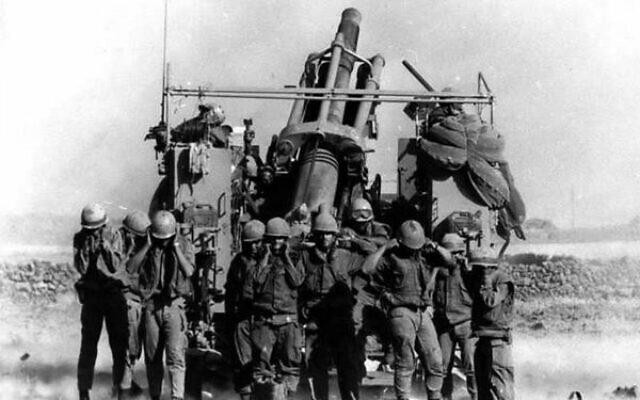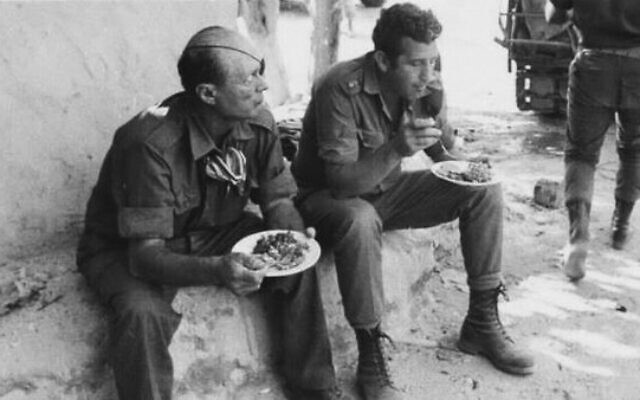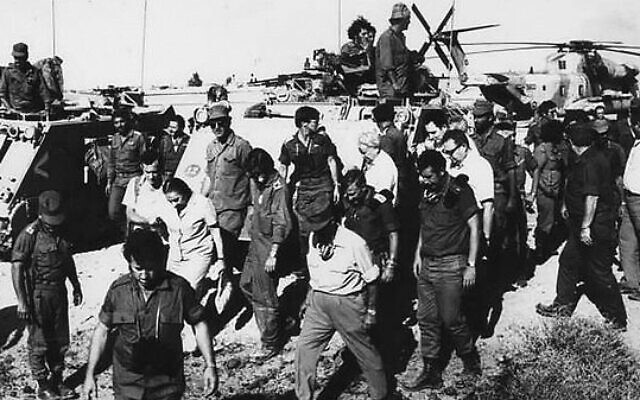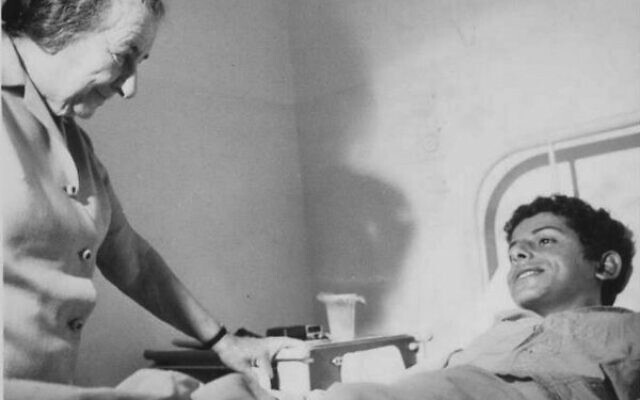Almost all Yom Kippur War files declassified
Ahead of the 50th anniversary of the Yom Kippur War, Israeli State Archives reveal thousands of documents and records of the intelligence failure that preceded the war, debates on a pre-emptive strike and more, writes Michael Bachner.

(Times of Israel) – Ahead of the 50th anniversary of the Yom Kippur War, the Israel State Archives have published a comprehensive collection of thousands of documents, photos, recordings and videos, providing an in-depth look into the way the war was handled and the major intelligence failure that preceded it.
While many protocols and documents relating to the decision-making before and during the 1973 war have been declassified over the years, the entire body of material has now been provided to the public, with the exception of a handful of files that remain sealed.
A specially designated website now displays – currently only in Hebrew – some 3500 archive files containing hundreds of thousands of pages, 1400 original paper documents, 1000 photos, 750 recordings, 150 minutes of government deliberations, and eight video clips.
“This is a 360-degree view of the story of the war, which affected all walks of life in Israel,” said state archivist Ruti Abramovitch.
“This is the largest exposure the State Archives have ever done.”
Some of the documents provide records of deliberations between then-prime minister Golda Meir and security chiefs in the days and hours before Syria and Egypt launched the coordinated war on October 6, 1973, as Israel was marking Yom Kippur.

Israel hadn’t expected the attack to materialise despite blatant signs that the armies were preparing for an invasion, believing that following Egypt’s defeat six years earlier in the Six-Day War, Cairo would only attack if it first gained the ability to paralyse Israel’s Air Force.
A day before the war began, Military Intelligence Directorate head Eli Zeira told Meir that the prevailing assessment was that Israel’s “readiness stems mainly from fear of us”, adding, “I think they aren’t about to attack, we have no proof. Technically, they are able to act. I assume that if they are about to attack, we will get better indications.”
In another assessment hours later, Zeira and IDF chief of staff David Elazar repeated their stance that Syria and Egypt were most likely to be planning a limited aggression or even merely deploying forces defensively.
Elazar added, “I must say, we don’t have sufficient proof that they don’t intend to attack. We don’t have conclusive indications that they want to attack, but I can’t say based on knowledge that they aren’t preparing.”

The following morning at 7.30am – six-and-a-half hours before the war was initiated – Meir’s military secretary read to her an overnight telegram from Mossad chief Zvi Zamir, indicating that war was a matter of hours away.
The discussion then focused on whether to launch a pre-emptive strike, as Jerusalem did in the 1967 war before several enemy armies could implement their attack plan.
But defence minister Moshe Dayan said, “We can’t allow ourselves to deliver a pre-emptive strike this time, from a diplomatic perspective. In the current situation, even five minutes before is impossible.”
Meir agreed: “A pre-emptive strike is very tempting, but this isn’t 1968. This time, the world is showing its ugly face. We won’t be believed.”
Another question was whether to publicly leak Israel’s knowledge of the impending attack in order to prevent it from materialising.
“Zvika [Zamir]’s source says the war can be thwarted by leaking [the information]. Zvika suggests doing this,” said minister Yisrael Galili, whose next sentence still remains classified.
Minister Yigal Alon advocated leaking the knowledge of the attack plan to media outlets before a cabinet meeting scheduled for noon that day. However, Meir only backed leaking the information to foreign diplomats, and she ended up filling in US ambassador Kenneth Keating after Dayan said, “We must tread carefully, so there’s no panicking.”
Meir asked Keating during their meeting to convey a message to Egypt: “We have no doubt that we will win, but we want to announce … that we aren’t planning an attack, but of course we are ready to repel their attack.”

When Keating asked if Israel would strike pre-emptively, Meir answered that it wouldn’t, “though it would have made it much easier for us”.
A day after the attack materialised – again surprising Israel since it happened earlier than expected – Dayan acknowledged to Meir and Alon that his assessments had been proven wrong.
“We had an assessment that was based on the previous war, and it was incorrect. We and others had wrong assessments about what would happen during the attempted crossing [of the Suez Canal],” he said.
Only days later, after Washington was convinced Israel hadn’t initiated the war, did the US provide weapons, with Meir saying, “There is a decision in principle by [US president Richard] Nixon on the Phantom [warplanes]. Now there’s just the issue of carrying this out. [US secretary of state Henry] Kissinger is looking for a way to fly them in.”

Photo: Israeli State Archives
The protocols were documented in the personal handwritten diary of Eli Mizrahi, the prime minister’s office manager at the time, some parts of which have previously been published.
According to the State Archives, the newly published material “documents in real-time events in all arenas: the political, the military, the international, the public and the civilian”.
These include “government’s deliberations, military-political consultations, meetings of the Knesset committees, correspondence of the foreign ministry … and situation assessments regarding the conduct of the war and civil defence and the organisation of the home front during it”.
The material, the State Archives said, “provides a fascinating glimpse into the decision-making process under conditions of uncertainty by the leaders, the fighting on the various fronts, the political contacts that took place with US mediation at the end of the war and after it, with Egypt and Syria, and the path that led to the signing of separation of forces arrangements with Egypt and Syria”.
The 1973 war ended in a final ceasefire on October 24, with Israel retaining control of the Sinai Peninsula and Golan Heights, which it had conquered in the Six-Day War.
Over 2500 Israeli soldiers died and thousands more were injured in the fighting, along with thousands of Egyptian, Syrian and Iraqi dead and wounded troops.

comments